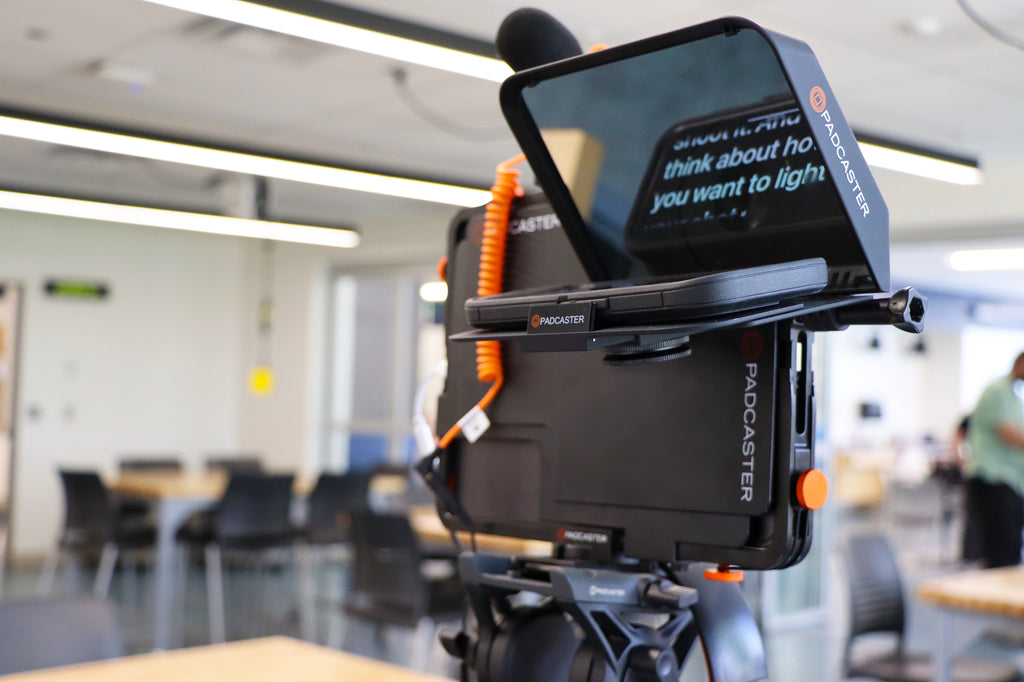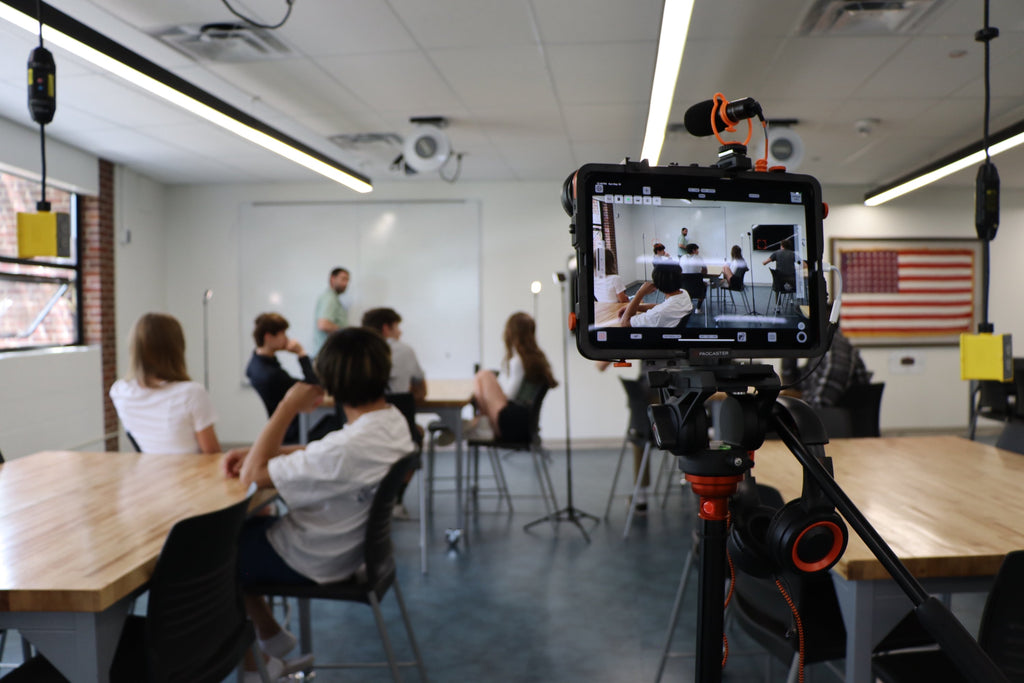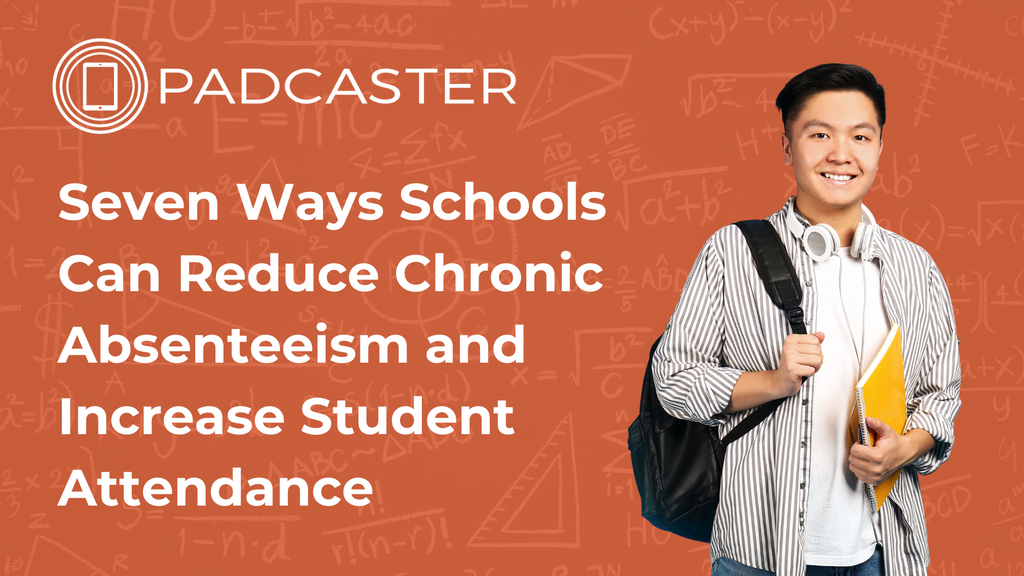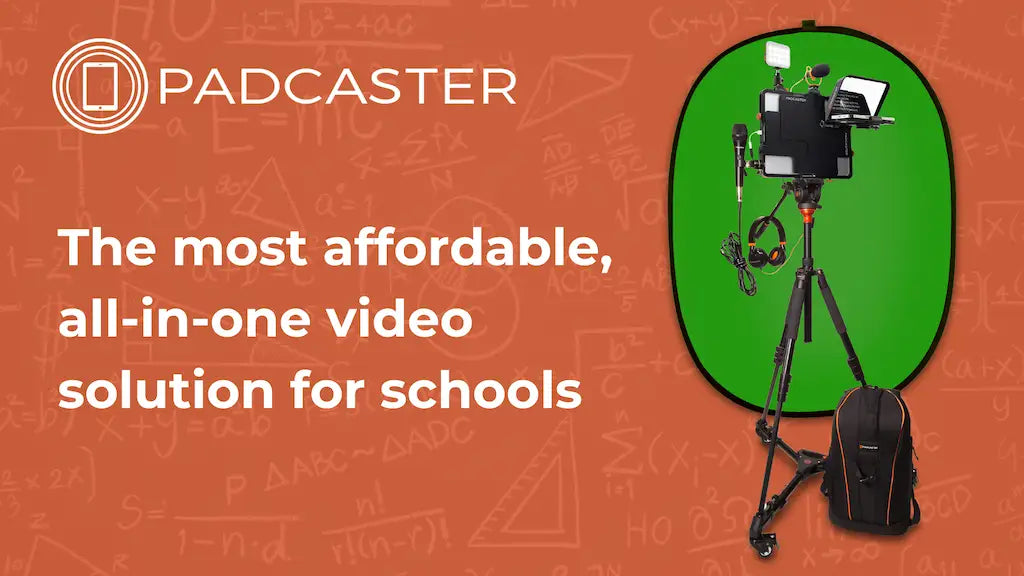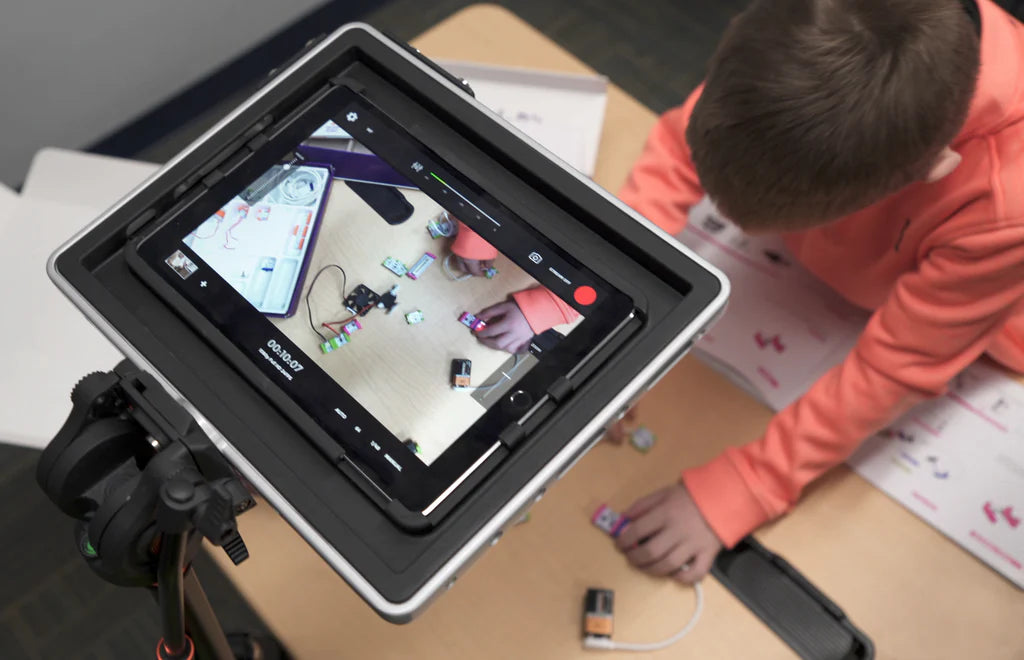
Key takeaways
- Simulate the in-class experience for absent students with recorded lessons.
- Video tutorials can help students learn at their own pace and reference past lessons when they need a refresher.
- Video-based education can help students feel more engaged in their learning, more connected and safer at school.
- Video combines multiple skills, including STEAM (science, technology, engineering, arts, math), to help students learn creative thinking, problem-solving and collaboration.
- The Padcaster Studio is the most affordable, all-in-one video solution for schools that fits in a backpack.
Table of Contents
What is Chronic Absenteeism, Why Does It Matter, Why Has It Increased and What Can Schools Do About It?
How Has Post-pandemic Learning Loss Impacted Students, Why Does It Matter and What Can Schools Do to Reverse It?
Why Does Student Engagement Matter and What Can Schools Do to Boost It
How Can Schools Future-proof Education and Set Students Up with 21st-century Skills?
Your Affordable Video-education Partner
U.S. schools face big challenges due to societal shifts, technological change and the lingering effects of the pandemic. In the face of uncertainty, tight budgets and burnt-out staff, trying harder and working longer isn't sustainable. Instead, K–12 school administrators and teachers need strategies and tools to help them do more with less.
That’s where Padcaster comes in. We’ll explain the top five issues schools face in 2024 and how Padcaster can help schools reframe those challenges into opportunities. Here’s what we’ll cover:
- Chronic absenteeism
- Post-pandemic learning loss
- Student engagement
- Nationwide teacher shortage
- Future-proofing education
What is Chronic Absenteeism, Why Does It Matter, Why Has It Increased and What Can Schools Do About It?
Chronic Absenteeism Defined
Educators define chronic absence as missing 10% or 18 days of school (three-and-a-half school weeks) a year for any reason. According to recent data, 26% of public-school students were chronically absent in 2023 compared to 15% in 2019.
Why Chronic Absenteeism Matters
- Prevents children from reaching early milestones like reading at grade level.
- One study found that every incidence of chronic absenteeism between 8th and 12th grade is associated with a seven-fold increase in the likelihood of that student dropping out.
- Chronic absenteeism has been linked to poor outcomes in adulthood like poverty, increased chronic disease and involvement with the criminal justice system.
Why Has Chronic Absenteeism Increased?
- Affluent families see an opportunity to travel outside peak times during the school year.
- Working-class families may experience barriers like a lack of transportation or childcare.
- Some students may face social-emotional or mental-health hurdles due to autism, anxiety and/or bullying.
What Can Schools Do to Combat Chronic Absenteeism?
How Has Post-pandemic Learning Loss Impacted Students, Why Does It Matter and What Can Schools Do to Reverse It?
How Post-pandemic Learning Loss Has Impacted Students
The pandemic and the resulting school closures hit student’s math and reading skills hardest, resulting in big losses. Even though math scores have started to boomerang, students still have a long way to go to make up for pandemic losses. Those students in poor districts are now at greater disadvantage than in 2019.
Why Learning Loss Matters
- Exacerbate historical inequities
- Damage students’ mental health and well-being
- Dissuade students from pursuing post-secondary education
What Can Schools Do to Reverse Learning Loss?
Why Does Student Engagement Matter, and What Can Schools Do to Boost It?
Why Does Student Engagement Matter?
When students are engaged in their learning process, they’re more likely to pay attention, be curious and develop critical-thinking skills. They’re able to see the connections between their learning and their future, which fosters growth, resilience and overall well-being. As Gallup said, “Student engagement is a pivotal factor in propelling student success.”
Engagement goes beyond the classroom. It shows in the hallways, cafeteria, recess and extracurricular activities. It also takes mental health and feeling safe for students to engage as their best selves.
How Schools Can Boost Student Engagement
YouGov found that more teens dream of being a professional streamer than being a doctor, musician, actor or professional athlete. Teachers can leverage that desire by using video in the classroom. Give students assignments that combine influencer trends with their lessons. Here are some ideas to get your started:
- Scene re-enactments from literature
- Points of view on a history or literature reading
- Perform a scene from a play or a poem as an ASMR video
- Create a day-in-the-life video of an element, animal or object in science
How Can Schools Future-proof Education and Set Students Up with 21st-century Skills?
Technological shifts like artificial intelligence may mean today’s students need different skills for tomorrow’s society. Many educators have focused on STEM-based education (science, technology, engineering and math).
Creative problem solving influenced by the arts as well as a human-centered approach will become more important, especially as artificial intelligence (AI) takes over jobs like coding. Students need even more emphasis on the arts and humanities as well as “soft skills” like emotional intelligence and interpersonal relationships today than they needed in the past.
The battle between STEM vs. STEAM (science, technology, engineering, art and math) is a false choice. Students today need a healthy combination of multiple creative problem-solving, thinking and collaboration skills to succeed in the future.
Video is a perfect blend of creativity and technology because of its storytelling nature as well as the technical aspects of getting the right shot. In addition, video is one of the most collaborative mediums, requiring a host of students to work together to complete a project from ideation to scripting, filming to editing.
With the democratization of video-editing tools and the advent of AI, students can ideate, create, edit and publish like never before. Embrace AI in the classroom as a creative feedback loop and personalized tutor. Here’s how:
- Ask students to come up with 10 of their own video ideas. Once they have their list, ask them to have AI, give them ideas they hadn’t thought of. Students can then develop their evaluation skills to choose the best idea and flesh it out.
- Students can use AI as an editor for scripting. They can prompt AI to give them feedback about ways they can improve their script, so they learn the skills and get a level of personalized support not possible in class.
Your Affordable Video-education Partner
Now that your wheels are turning on how to integrate video into your school and curriculum, you’ll need to choose the right video solution. Not only is Padcaster Studio the most affordable video kit on the market, it’s also the only all-in-one solution that fits in a backpack.
Our inclusive, rugged design makes the Padcaster Studio for the high-impact, mobile needs of schools. Intuitive and easy to use, students can use the Padcaster Studio on their own without in-depth teacher oversight, giving them maximum autonomy to create video projects, whether it’s for morning announcements, journalism classes or sports.
Start a pilot video-based program with your school’s library or media department. Scale up with multiple Padcaster Studios for your school or district. We make it easy to find the right quantity for your needs. The challenges your school faces are opportunities to adapt and transform. Padcaster gives you a new tool to seize setbacks as opportunities with video in the classroom. Shop now or get a quote.
Need More Information?
Fill out the form here to get in touch with a member of the Padcaster Team.